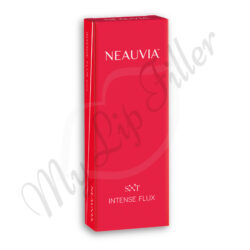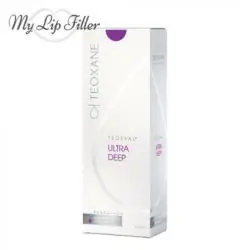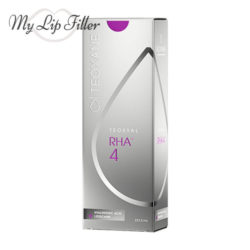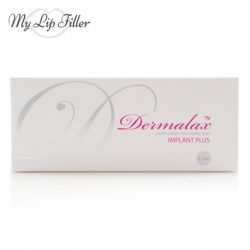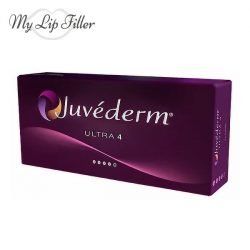Contouring fillers have inevitably, taken a lot of shares from the traditional plastic surgery market. Face modeling filler are the preferred method of enhancing various facial features and sculpting the facial oval, due to the much less invasive nature of this skin treatment, along with a number of advantages, like cost effectiveness and safety. Once gel-based filler products appeared on the market, there was finally a viable alternative allowing to achieve the facial augmentation results, which were previously only possible by undergoing surgery.
But what is a modeling filler? In general, these are very dense products for volumization of various parts of the face. They are intended to last and have superios resilience to the effect of the body’s enzymes, as compared to the softer lip fillers or the even lower density skin gel for surface wrinkles. Normally, such gel is applied deep into the subcutaneous layer of the dermis and is sued to provide noticeable to dramatic effect of volume increase in various parts of the face. In effect, it’s a non-permanent and convenient substitute to traditional implants, with the added bonus of the actual procedure being minimally invasive
Types of Face Modeling Fillers
While there are a lot of common properties to, modeling filler products used to enhance and shape the various facial features are also quite diverse. And while HA based solutions dominate the market, they are hardly the only option available. Here is a quick overview of the main types of fillers for facial contouring:
- Hyaluronic acid – gel based on HA absolutely dominates the market. Be it premium solutions like Restylane Lyft or Juvederm Voluma or popular Korean products like Revolax SuQ and Rejeunesse Shape, these products are extremely popular. Since Hyaluronic acid is natural to the skin, they are very safe and biocompatible. While a dense filler made of HA will not last as long as the other entries on this list, they are extremely easy to dissolve using Hyaluronidase enzymes, which makes them a preferred option.
- PLLA (Poly-L-Lactic Acid) – fillers based on PLLA work a bit differently than HA gel. The compound is synthetic in nature; however, it is proven to be completely safe and fully biodegradable, with noticeable resilience to body enzymes. Poly-L-Lactic filler products boost collagen production and rather than immediately volumize the treated area of skin, they will volumize it accumulating collagen there over time.
- PCL (Polycaprolactone) – like the previous type, Polycaprolactone is a synthetic (polymer) product. Safe and very effective in boosting collagen synthesis, it will offer long term effect and these are some of the best collagen fillers on the market. Their effect can easily surpass 24 months.
- Calcium – it’s most often used in the form of Calcium Hydroxylapatite (CaHA). Like hyaluronic acid, it’s natural to the human body, but instead of the skin, it can be found in the bones. In fillers, it uses included as microscopic spheres suspended in a gel carrier. CaHA based filler solutions have the allure of offering immediate volumiztion AND the long-term collagen synthesis boost. The highest quality cosmetic fillers of this type can offer very long-term improvements and are sometimes classified as semi-permanent fillers.
The Benefits and Considerations of Non-Surgical Facial Contouring
There are many reasons to choose fillers over surgery. Safety and convenience are the obvious ones. A quick, low invasive filler treatment of 20 minutes has much less risks and almost no adverse effects, as opposed to cosmetic surgery. Not to mention that the downtime is practically non-existent. Getting modeling or wrinkle fillers are not only quicker and safer, but even if the patient is unhappy with the result, the dermatologist or licensed practitioner handling he procedure can easily control the process and revert any results, in case Hyaluronic acid fillers are used.
Of course, there is also the price factor to consider – getting filler facial modeling is much, much lower cost than surgical enhancement. Not only is the procedure cheaper to carry out but the filler itself is much more affordable than surgical implants.
Showing 1–12 of 46 results
-

A-Jax D’azur PLA / PDLLA Filler – 200mg
$165.00 Add to cart -

A-Jax Keen Sublime (1 x 1.1ml)
$41.00 Add to cart -
Sale!

Elasty G Plus Double Filler (2 x 1ml)
Original price was: $79.00.$75.05Current price is: $75.05. Add to cart -

Neauvia Intense Flux 1 x 1ml
$96.00 Add to cart -
Sale!

Teosyal Puresense Ultra Deep (2 x 1.2ml)
Original price was: $235.00.$223.25Current price is: $223.25. Add to cart -
Sale!

Teosyal RHA 4 (2 x 1.2ml)
Original price was: $276.00.$249.85Current price is: $249.85. Add to cart -
Sale!

Dermalax Implant Plus (2 x 1.1ml)
Original price was: $105.00.$94.50Current price is: $94.50. Add to cart -
Sale!

Glowing Fill Full (2 x 1ml) – Dual Pack
Original price was: $79.00.$75.05Current price is: $75.05. Add to cart -
Sale!

Juvederm Ultra 4 (2 x 1ml)
Original price was: $247.00.$234.65Current price is: $234.65. Read more -
Sale!

Juvederm Volift (2 x 1ml)
Original price was: $324.00.$307.80Current price is: $307.80. Add to cart -
Sale!

Juvederm Voluma (2 x 1ml)
Original price was: $324.00.$307.80Current price is: $307.80. Add to cart -
Sale!

Rejeunesse Shape (1 x 1.1ml)
Original price was: $51.00.$48.45Current price is: $48.45. Add to cart



